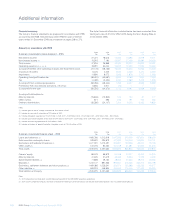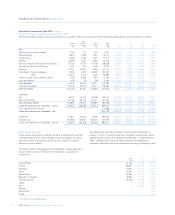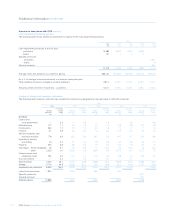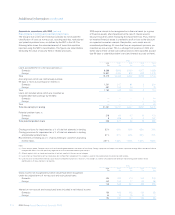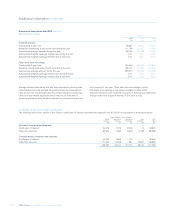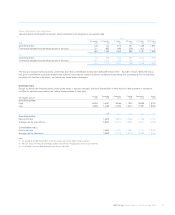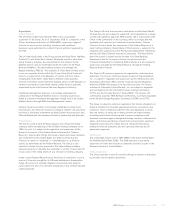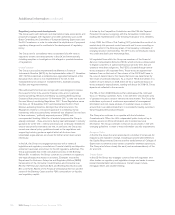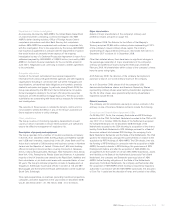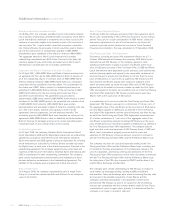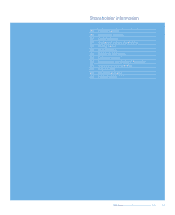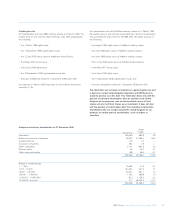RBS 2008 Annual Report Download - page 279
Download and view the complete annual report
Please find page 279 of the 2008 RBS annual report below. You can navigate through the pages in the report by either clicking on the pages listed below, or by using the keyword search tool below to find specific information within the annual report.
RBS Group Annual Report and Accounts 2008278
Additional information continued
Economic and monetary environment
The world economy entered its most difficult period in a generation in
the second half of 2008. The failure of a large financial institution in
September coincided with the near-seizure of already fragile interbank
funding markets. Heightened risk aversion among investors led to
unprecedented volatility across global financial markets including
equities, fixed income and foreign exchange. Many asset prices
tumbled, with global real estate and equity markets the worst hit, while a
‘flight to quality’ prompted an historic rally in government bond markets
that pushed long-term risk free interest rates towards all time lows in
many developed economies.
The pronounced increase in commodity prices in the first half of 2008,
together with the intensifying financial crisis led to a further sharp
deterioration in private sector confidence in all major economies. Private
spending weakened significantly. Softer demand conditions adversely
affected prospects for profitability and employment. Policymakers
responded aggressively. Since September, governments have either
proposed or implemented measures that include the recapitalisation of
the banking sector, tax cuts and/or new infrastructure spending. Central
banks provided support through rate cuts and increased liquidity
provision. Despite these supportive actions, the global economy
remained on a downward trajectory at the beginning of 2009, with many
industrialised economies in recession.
In the UK, the Bank Rate fell from 5.5% at the beginning of 2008 to
1.0% in February 2009. The Bank of England remained cautious in the
first half of 2008, lowering policy rates a modest 25bps twice. Mounting
inflationary pressures were a major constraint, with the annual inflation
rate climbing as high as 5.2% in September, the highest reading since
the Bank of England’s operational independence in 1997, and some
way above the official target of 2%. Before October, the Bank focused
on liquidity measures to support the financial system. When it became
clear in the final quarter of 2008 that the confidence in the wider
economy had fallen to levels consistent with a deep contraction, policy
became more aggressive. The government assisted the recapitalisation
of the banking sector, while the Bank of England reduced rates rapidly,
from 5.0% in October to 1.0% in February 2009.
However, the economy had already gathered too much negative
momentum to stop an official recession – GDP declined by 2.1% in the
second half of 2008, and is widely expected to fall further in 2009. One
reason is lower policy rates have failed to translate effectively into looser
monetary conditions for the private sector. Three-month sterling LIBOR,
a key determinant of borrowing costs for households and firms,
remained on average almost 100bps above the prevailing Bank Rate,
well above its long-term average of 20bps. Sterling’s 17% depreciation
on a trade-weighted basis did not deliver a significant offset to
weakening domestic demand due to the difficult economic conditions
prevailing in the UK’s main trading partners.
US policy rates also declined substantially in 2008, from 4.25% in
January to effectively zero in December. With no room to cut interest
rates further, the Federal Reserve has since started to target longer term
market interest rates to directly lower the cost of funds for households
and firms, for example by purchasing mortgage-backed securities and
corporate commercial paper. More unorthodox policy measures are
likely this year. Similar to the UK, monetary policy failed to gain much
traction in the wider economy. Three-month US$ LIBOR averaged close
to 100bps higher than the prevailing policy rate.
The US officially entered recession in December 2007 and, in spite of a
fiscal stimulus in the first half of the year, activity continued to fall
through 2008 and is forecast to decline markedly in 2009. The effects
were acutely felt in employment, with US non-farm businesses shedding
2.6 million jobs in the twelve months to December. The dollar’s 11%
depreciation in 2007 helped to boost net exports, making trade the
single biggest contributor to GDP growth in 2008. However, this support
was fading in early 2009, due to slumping overseas demand.
The Eurozone started 2008 on a strong footing, with some member
countries experiencing above-trend growth in the first quarter. However,
for reasons that varied across countries, conditions worsened markedly
throughout the remainder of the year, and the region officially entered
recession in the second quarter. Growth in Germany, the region’s largest
economy and the world’s largest exporter, was hit hard by the slowdown
in global trade. Many of the more peripheral economies, like Ireland and
Spain, with higher debt levels were hit hard by the turbulence in credit
markets and falling asset prices. Economic activity in the entire region is
forecast to continue to contract in 2009.
Policy in the Eurozone was on average less supportive than in the UK or
the US, with the Repo Rate on hold at 4% in the first half of 2008. In
July 2008, the ECB raised rates by 25bps to fend off the dangers of
spiralling inflation. Official rates finally started to fall in October, when
the ECB participated in a globally co-ordinated rate cut to calm
investors’ fears amid intensifying strains in the global financial system.
The euro’s strong appreciation against the dollar also reduced the
competitiveness of the region’s exporters.
Initially, Asia Pacific appeared insulated from economic difficulties
elsewhere as China and India continued to grow strongly in the first half
of 2008. In fact, surging inflation reinforced concerns about overheating,
and prompted a series of policy measures aimed at cooling monetary
conditions. But this perception changed towards the end of 2008, when
recession in the major industrialised countries highlighted the region’s
exposure to a retrenchment in global trade. Growth forecasts have been
cut substantially, with 2009 growth in China and India potentially falling
to half its level from a year earlier. Increasing risk aversion of
international investors also led to large capital outflows, putting
downward pressure on floating currencies and local equity markets.
Exchange rates affect earnings and costs reported by the Group’s
non-UK subsidiaries, and the value of non-sterling denominated assets
and liabilities. Sterling weakened significantly during 2008, losing 28%
against the dollar and 30% against the euro, respectively. These
movements increase the sterling-value of non-sterling earnings, costs,
assets and liabilities. As a result, the Group recognises translation
benefits if it reports profits and/or has a positive net asset position
denominated in foreign currency.


